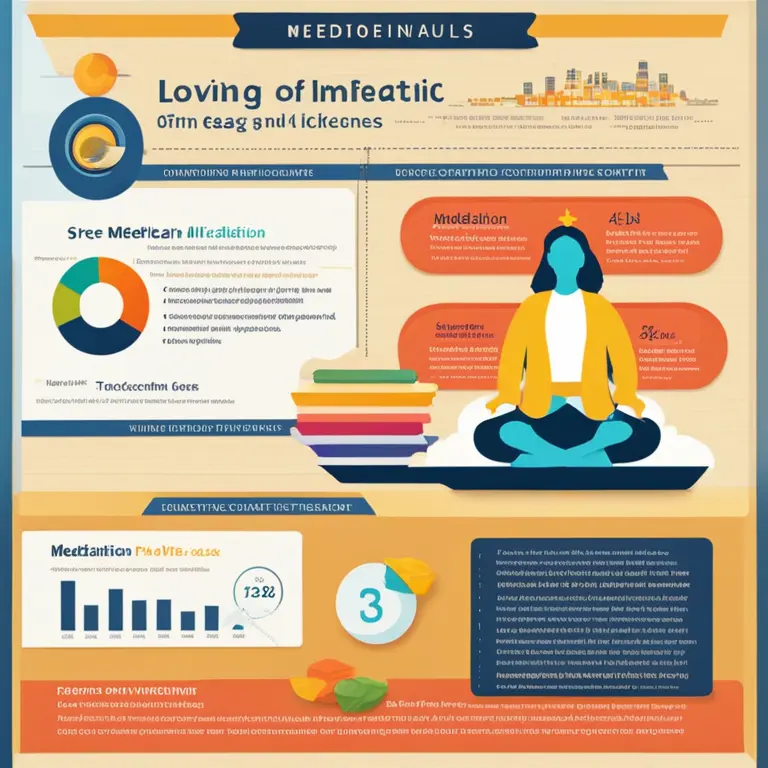
Various Meditation Techniques for Inner Harmony
Discover prevalent meditation methods to cultivate peace, focus, and balance in today’s fast-paced world.
article by Hina Kurosawa
Meditation’s Rising Popularity
With the ever-accelerating pace of modern life, meditation has soared in popularity as a refuge for those seeking tranquility and mental clarity. Renowned for its stress-relieving qualities, meditation is not a one-size-fits-all practice; it encompasses a variety of techniques that cater to different preferences and goals. This article delves into some of the most practiced meditation methods, offering a guide to help you find the technique that resonates with your personal path to inner peace.

Mindfulness Meditation
Mindfulness Meditation, rooted in Buddhist teachings, is a widely practiced form that emphasizes present-moment awareness. Practitioners learn to observe their thoughts and sensations without judgment, fostering a state of alertness and concentration. This form of meditation can be done anywhere, making it particularly suitable for those with a busy lifestyle looking to incorporate short, consistent practices into their daily routine.

Transcendental Meditation
Transcendental Meditation, popularized in the 1960s, requires practitioners to sit comfortably and silently repeat a personally assigned mantra—a word or phrase. This technique is practiced for 15 to 20 minutes twice a day and is said to lead to a state of deep rest and relaxation, facilitating reduced stress and improved brain function and memory.

Zen Meditation (Zazen)
Zen Meditation, or Zazen, is the heart of Zen Buddhist practice. In this seated meditation, practitioners usually focus on their breath and the movement of the abdomen, or they may work on a koan (a paradoxical anecdote or riddle). Zazen aims to halt the chatter of the mind to experience insight and enlightenment through disciplined concentration.
Guided Meditation
In Guided Meditation, also known as guided imagery or visualization, participants meditate in response to the guidance provided by a trained practitioner or teacher, often in the form of storytelling or suggestions. It usually includes visualizing positive scenes or outcomes to bring about relaxation and peace. This form is particularly accessible to beginners and those who prefer a structured practice.
Yoga Meditation
Yoga practitioners often incorporate meditation into their routine to achieve a deeper level of peace and harmony between body and mind. Techniques like Kundalini Yoga, for instance, combine movements with deep breathing and mantras to break down internal barriers and release the spiritual energy within.
Heart Rhythm Meditation (HRM)
Heart Rhythm Meditation focuses on breath and heart rate, emphasizing the creation of a harmonious interplay between the two. This form of meditation supports emotional balance and cardiovascular health, encouraging a sense of synchronization between one's internal state and the external world.
Metta Meditation
Metta, or Loving-kindness Meditation, aims at developing unconditional love and kindness towards all beings. Beginning with oneself and gradually extending to others, this practice involves repeating phrases of well-wishes and positive intentions, ultimately fostering a sense of empathy and connectedness.
Published: 2/12/2024
Modified: 2/12/2024
More predictions
Come back here soon to learn more about yourself and your future


The Harmonic Resonance of Meditation Music
Delve into the serene world of meditation music and discover how it amplifies your spiritual and astrological practices, guiding you toward inner peace and cosmic synchronicity.


The Benefits of Meditation Music
Discover the benefits of meditation music for enhancing mindfulness practices and spiritual alignment, while diving into the celestial influence on your inner peace journey.


The Heart of Meditation: A Journey Inward
Discover the heart of meditation, its benefits, and how to integrate this ancient practice into modern life for peace and self-discovery.